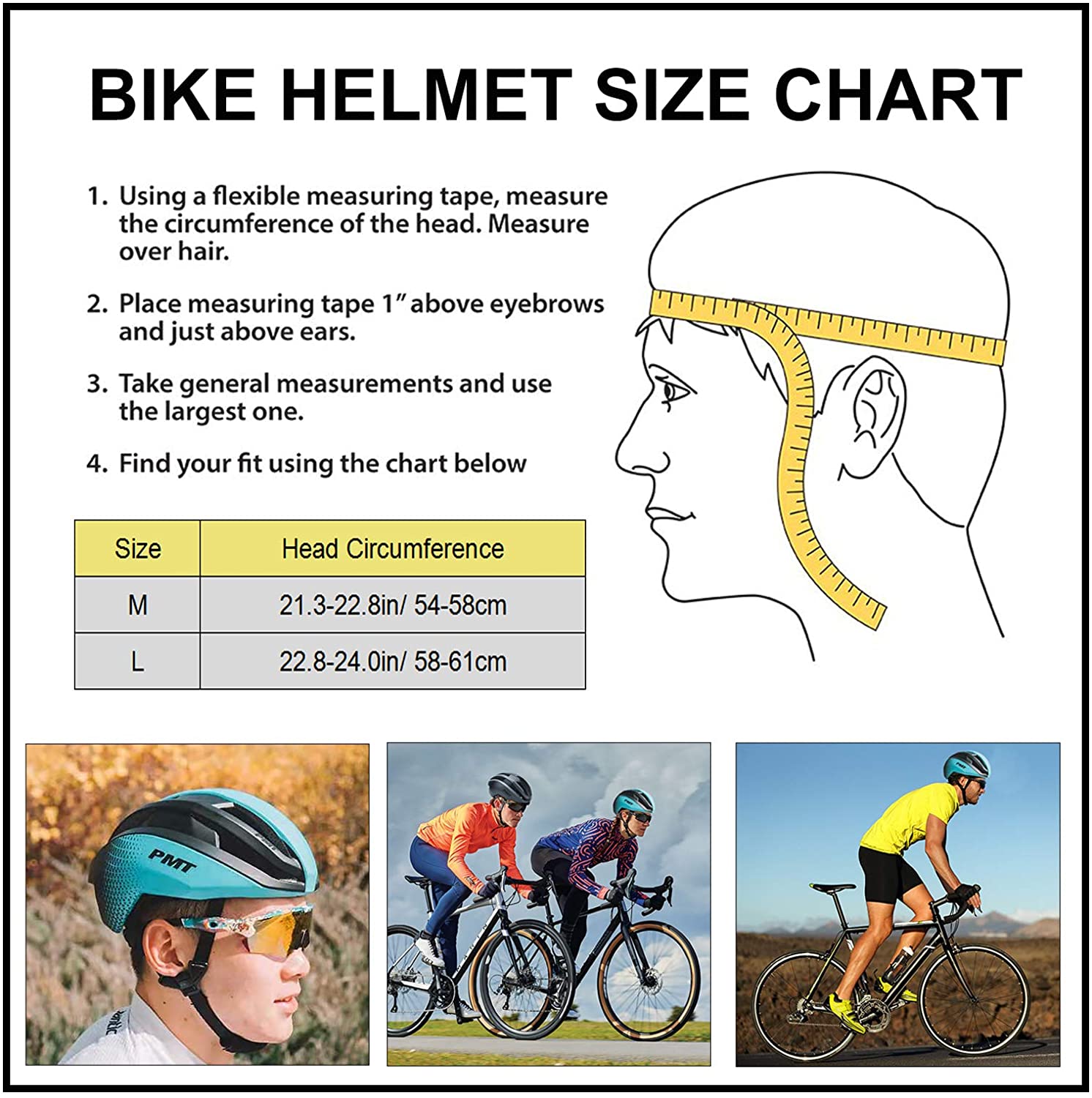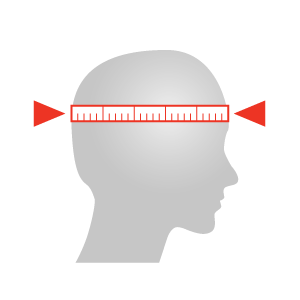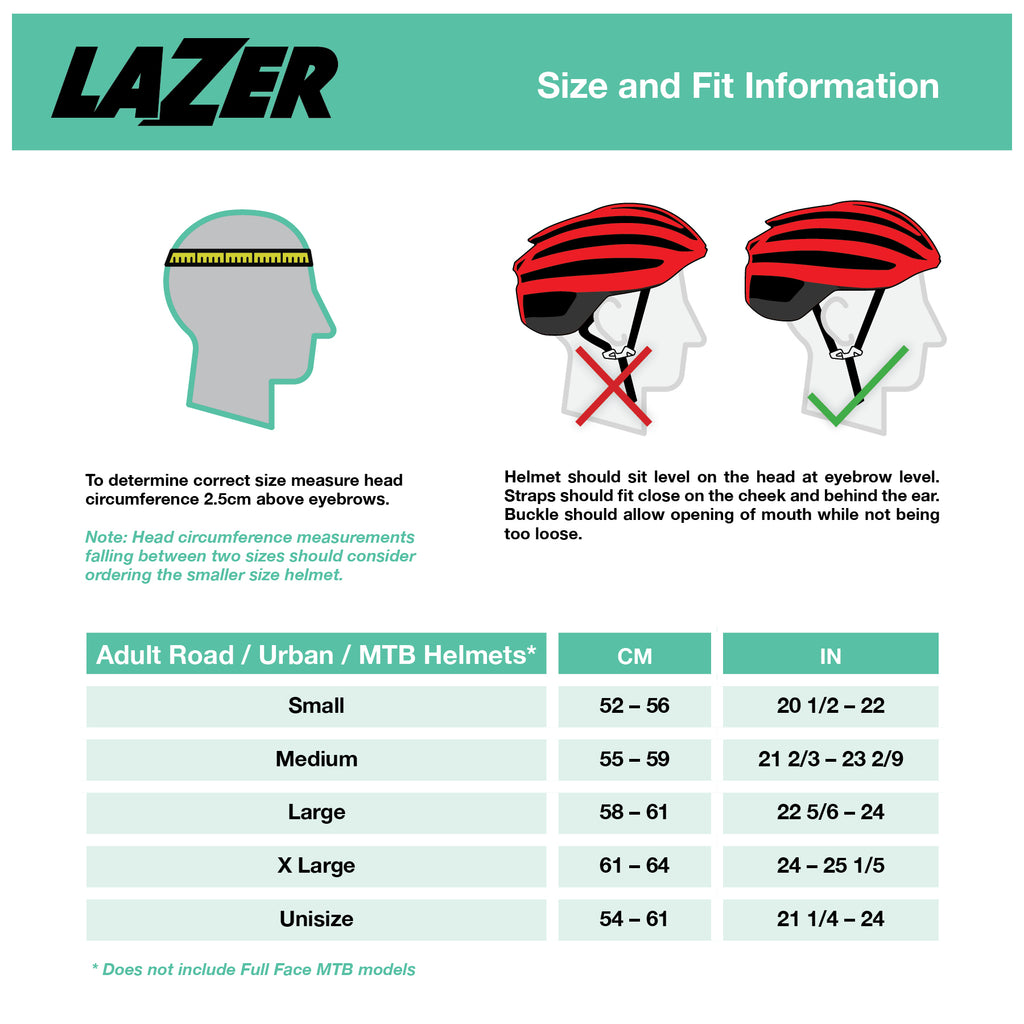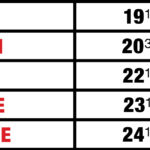To measure a bike helmet, use a flexible tape measure around your head’s largest circumference. Measure just above your eyebrows and ears.
A properly fitting bike helmet is crucial for safety. An ill-fitting helmet can compromise protection during an accident. Accurate measurement ensures comfort and maximum safety. Start by using a flexible tape measure to find the largest circumference of your head.
Position the tape measure just above your eyebrows and ears. This simple step provides an accurate size for your helmet. A well-fitted helmet not only offers better protection but also enhances your riding experience. Remember, different brands may have slight size variations, so always check the specific sizing chart. Prioritize your safety by ensuring your helmet fits perfectly every time you ride.

Credit: www.cxwxc.com
Importance Of A Proper Fit
Ensuring a bike helmet fits properly is crucial for safety. A helmet that fits well protects your head in accidents. A poor fit can reduce the helmet’s effectiveness.
Safety Considerations
A properly fitting helmet offers better protection. It stays in place during an accident. A loose helmet can slip, exposing the head to injury. A tight helmet can cause headaches and discomfort.
To measure for a bike helmet, use a soft measuring tape. Measure around the largest part of your head, just above the eyebrows. This ensures you get the right helmet size.
Comfort And Performance
Comfort is key for long rides. A helmet that fits well enhances your experience. It should not pinch or cause pressure points.
A comfortable helmet improves performance. You can focus on the ride, not adjusting your helmet. Helmets with adjustable straps and padding offer a better fit.
Here’s a quick guide to measuring for a bike helmet:
- Use a soft measuring tape.
- Wrap it around the largest part of your head.
- Measure just above the eyebrows.
- Check the helmet size chart.
Choosing the right size ensures safety, comfort, and better performance.
Tools You Will Need
Before you measure your bike helmet, you need some tools. These tools will help you get the perfect fit. Here are the tools you need:
Measuring Tape
A measuring tape is the most important tool. It will help you measure your head. Use a soft measuring tape. It should be flexible and easy to wrap around your head.
Follow these steps to measure your head:
- Wrap the measuring tape around your head.
- Place it just above your eyebrows.
- Ensure it is level all around your head.
- Read the measurement in centimeters or inches.
Write down your measurement. This will be useful for finding the right helmet size.
Mirror Or Helper
You may need a mirror or a helper. A mirror will help you see the measuring tape. This is useful if you are alone.
Alternatively, ask someone to help you. A helper can hold the tape for you. They can also read the measurement for you. This makes the process easier and more accurate.
Having a helper or a mirror is not mandatory, but it makes the task simpler. Whether you use a mirror or a helper, ensure the tape is level and snug.
With the right tools, measuring your head for a bike helmet becomes easy. You can ensure your helmet fits well and keeps you safe.
Measuring Your Head Size
Knowing your head size is crucial for a proper bike helmet fit. A well-fitted helmet ensures maximum protection during rides. Follow these simple steps to measure your head size accurately.
Finding The Right Spot
First, find the right spot to measure your head. Use a soft measuring tape. Place it around your head about one inch above your eyebrows.
This spot is where your helmet will sit. Ensure the tape is level and not too tight.
Taking Accurate Measurements
Wrap the tape around your head. Make sure it stays level. Read the measurement where the tape meets.
Note the measurement in centimeters or inches. If you don’t have a measuring tape, use a string. Mark where the string meets, then measure it with a ruler.
Refer to the helmet size chart below to find your size:
| Head Circumference (cm) | Helmet Size |
|---|---|
| 50-54 | Small |
| 54-58 | Medium |
| 58-62 | Large |
Use these steps to ensure the best fit for your bike helmet. A well-fitted helmet can save your life.
Interpreting The Measurements
Measuring your bike helmet size is just the start. Interpreting the measurements correctly ensures a snug and safe fit. Understanding size charts and manufacturer variations can make all the difference.
Size Charts
Most bike helmets come with a size chart. This chart helps you match your head measurement to the correct helmet size.
Here’s a general size chart for bike helmets:
| Head Circumference (cm) | Helmet Size |
|---|---|
| 51-54 | Small |
| 55-58 | Medium |
| 59-62 | Large |
| 63+ | X-Large |
Always check the size chart before buying a helmet. It helps ensure you pick the right size.
Manufacturer Variations
Not all helmets fit the same. Different manufacturers may have slight variations in their sizing.
Here are some tips to consider:
- Check the brand’s specific size chart. Each brand may differ.
- Try on helmets from different brands. This helps find the best fit.
- Read reviews. Other users’ experiences can guide your choice.
Some manufacturers offer adjustable helmets. These have extra padding or adjustable straps for a customized fit.
Trying On Helmets
Trying on helmets is a crucial step in finding the right fit. A well-fitting helmet protects your head during rides. Here’s how to ensure your helmet fits perfectly.
Adjusting Straps
First, wear the helmet and adjust the straps. Make sure the straps form a “V” shape under your ears. This helps keep the helmet in place.
Next, tighten the chin strap. You should be able to fit one finger between the strap and your chin. If it’s too loose, the helmet may move during a fall. If it’s too tight, it will be uncomfortable.
Checking Fit
Once the straps are adjusted, check the overall fit of the helmet. The helmet should sit level on your head, covering your forehead. It should not tilt backward or forward.
Shake your head from side to side. The helmet should stay in place. If it shifts, try adjusting the straps again. If it still moves, try a different size or model.
Another way to check fit is to place your hand on top of the helmet. Push down gently. The helmet should feel snug and secure. If it moves easily, it is too loose.

Credit: www.nutcasehelmets.com
Common Fit Issues
Ensuring a bike helmet fits correctly is crucial for safety and comfort. Many riders face common fit issues that can affect their riding experience. Addressing these issues can help you achieve a snug and secure fit.
Too Loose Or Tight
A helmet that is too loose can slide around, reducing protection. A helmet that’s too tight can cause discomfort and headaches. To check the fit, fasten the straps and shake your head. The helmet should stay in place without moving. If it’s too loose, adjust the retention system until it fits snugly.
| Issue | Solution |
|---|---|
| Helmet slides around | Tighten the straps and retention system |
| Helmet feels too tight | Loosen the straps and adjust the retention system |
Pressure Points
Pressure points can cause pain and discomfort during your ride. These often occur where the helmet’s padding presses against the head. To identify pressure points, wear the helmet for a few minutes. Then, remove it and check for red marks on your skin.
- Forehead Pressure: Adjust the front padding or choose a different helmet size.
- Side Pressure: Loosen the side straps or try a helmet with a different shape.
- Top Pressure: Adjust the top padding or check if the helmet is too small.
Addressing common fit issues ensures your bike helmet provides maximum protection. It also enhances your riding comfort.
Safety Checks
Ensuring your bike helmet is safe involves several important safety checks. These checks guarantee that your helmet offers the best protection possible. Here’s a detailed guide to help you perform these essential checks.
Retention System
The retention system keeps your helmet securely on your head. Follow these steps to check it:
- Buckle the chin strap.
- Adjust the straps to fit snugly under your chin.
- Ensure you can fit only one or two fingers between the strap and your chin.
- Make sure the straps form a “V” shape under your ears.
Proper adjustment of the retention system is crucial for safety. A loose strap can cause the helmet to move during impact.
Helmet Stability
Checking the helmet stability ensures it stays in place during a crash. Use these steps:
- Put on the helmet and fasten the chin strap.
- Shake your head side-to-side and up-and-down.
- The helmet should not move independently of your head.
- If the helmet moves, tighten the retention system.
A stable helmet will provide better protection. Ensure it fits well and does not wobble.

Credit: www.benelli.bike
Maintenance Tips
Bike helmets are crucial for safety. Maintaining them ensures they last longer. Here are some essential maintenance tips to keep your helmet in top shape.
Regular Inspections
Inspect your bike helmet regularly. Look for cracks or dents. Check the straps and buckles for wear. Ensure the foam padding is intact. Use a flashlight to spot hidden damage. Replace the helmet if you find any serious issues. Safety is the priority.
Proper Storage
Store your helmet correctly to extend its life. Keep it in a cool, dry place. Avoid direct sunlight, which can weaken the materials. Use a helmet bag for extra protection. Never hang it by the straps. This can cause them to stretch. Keep it away from chemicals and sharp objects.
| Maintenance Task | Frequency |
|---|---|
| Inspect for Damage | Weekly |
| Check Straps | Monthly |
| Proper Storage | Always |
- Inspect your helmet for any visible damage.
- Store your helmet in a cool, dry place.
- Check the straps and buckles regularly.
- Inspect helmet weekly.
- Check straps monthly.
- Store in a cool, dry place.
Frequently Asked Questions
How Do I Measure My Head For A Bike Helmet?
To measure your head, use a flexible tape. Wrap it around your head, about an inch above your eyebrows. Ensure the tape is level.
What Size Bike Helmet Do I Need?
Match your head measurement to the helmet size chart provided by manufacturers. Sizes usually range from small to extra-large.
Can I Use A String To Measure My Head?
Yes, you can use a string. Wrap it around your head, then measure the string with a ruler for accuracy.
Why Is Measuring My Head Important For Helmet Fit?
A proper fit ensures maximum protection and comfort. An ill-fitting helmet can be unsafe and uncomfortable.
Conclusion
Ensuring your bike helmet fits properly is crucial for safety. Follow the steps outlined to measure your head accurately. A well-fitted helmet offers maximum protection during rides. Don’t compromise on safety; invest time in getting the right fit. Happy and safe biking!


